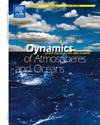2023年海葵残区如何产生强降水
IF 2
4区 地球科学
Q2 GEOCHEMISTRY & GEOPHYSICS
引用次数: 0
摘要
2023年,海葵的长时间残余造成了异常的破坏,暴露了对热带气旋(TC)残余动力学的理解的关键空白。虽然现有的研究已经记录了TC残余物的衰变过程,但仍然缺乏对阶段相关水分输送的系统分析。本研究结合多源资料揭示了海葵残片的结构演化、水汽运动轨迹和降水驱动因素。在海葵残余物持续期间,山脉和环境气流对低压系统起到了隔离作用,使其覆盖范围基本保持不变。根据时间变化特征,将海葵残体的生命周期划分为三个阶段:移动阶段、充装阶段和分离阶段。在移动阶段,海葵残余物中心和相应的雨带逐渐向西移动,呈现正斜压特征。冲锋阶段标志着海葵残余中心在广西上空盘旋的时期。正压结构的优势增强了水汽辐合,形成弧形强雨带。分离阶段,海葵残余物中低层中心向相反方向移动,形成以斜压为主的环流结构。冷暖空气辐合导致珠江三角洲地区出现降水。这些发现突出了地形和水分输送对TC残余物演化和降水的影响,为未来预测由这些残余物引起的降水和洪水相关灾害提供了有价值的见解。本文章由计算机程序翻译,如有差异,请以英文原文为准。
How does HAIKUI remnant produce heavy precipitation in 2023
In 2023, HAIKUI's prolonged remnant caused exceptional destruction, exposing critical gaps in understanding tropical cyclone (TC) remnant dynamics. While existing studies have documented decay processes of TC remnant, systematic analyses of stage-dependent moisture transport remain lacking. This study combines multi-source data to reveal HAIKUI remnant's structural evolution, moisture trajectories, and precipitation drivers. During the persistence of the HAIKUI remnant, the mountain ranges together with environmental airflow played a pivotal role in isolating the low-pressure system, maintaining its coverage largely unchanged. Based on temporal variations, the lifecycle of HAIKUI remnant can be segmented into three distinct stages: the moving stage, the charging stage, and the separating stage. In the moving stage, the center of HAIKUI remnant and the corresponding rain band gradually shifted westward, exhibiting both barotropic and baroclinic characteristics. The charging stage marked a period where HAIKUI remnant's center hovered over Guangxi Province. The dominance of barotropic structure enhanced moisture convergence, generating an arc-shaped heavy rainfall belt. In the separating stage, the mid- and low-level centers of HAIKUI remnant moved toward opposing directions, resulting in a primarily baroclinic circulation structure. The convergence of cold and warm air led to precipitation in the Pearl River Delta region. The findings highlighted the impact of topography and moisture transport on the evolution and precipitation of TC remnant, offering valuable insights for future predictions of precipitation- and flood-related disasters caused by such remnants.
求助全文
通过发布文献求助,成功后即可免费获取论文全文。
去求助
来源期刊

Dynamics of Atmospheres and Oceans
地学-地球化学与地球物理
CiteScore
3.10
自引率
5.90%
发文量
43
审稿时长
>12 weeks
期刊介绍:
Dynamics of Atmospheres and Oceans is an international journal for research related to the dynamical and physical processes governing atmospheres, oceans and climate.
Authors are invited to submit articles, short contributions or scholarly reviews in the following areas:
•Dynamic meteorology
•Physical oceanography
•Geophysical fluid dynamics
•Climate variability and climate change
•Atmosphere-ocean-biosphere-cryosphere interactions
•Prediction and predictability
•Scale interactions
Papers of theoretical, computational, experimental and observational investigations are invited, particularly those that explore the fundamental nature - or bring together the interdisciplinary and multidisciplinary aspects - of dynamical and physical processes at all scales. Papers that explore air-sea interactions and the coupling between atmospheres, oceans, and other components of the climate system are particularly welcome.
 求助内容:
求助内容: 应助结果提醒方式:
应助结果提醒方式:


